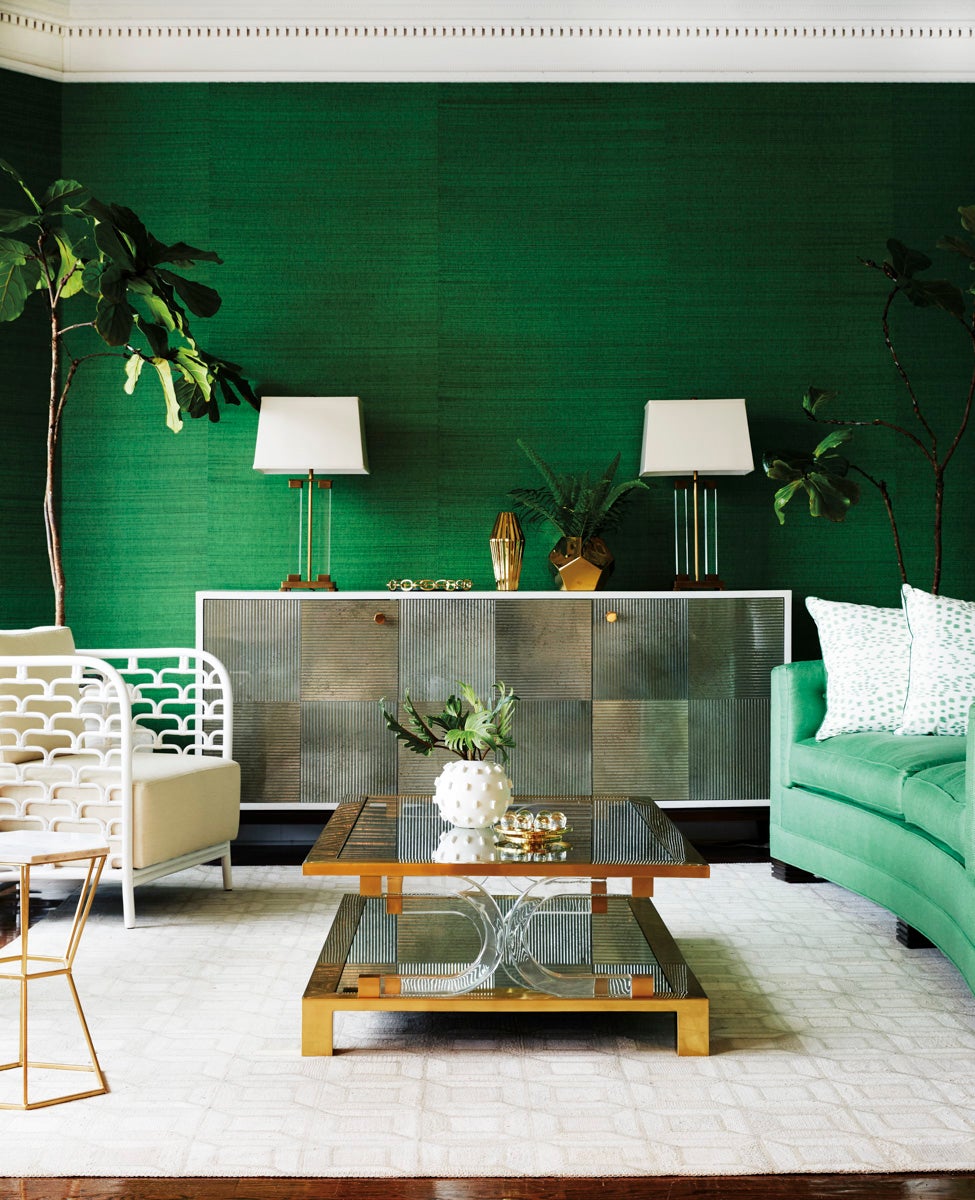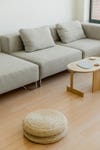This Design Advice Will Make You Feel Good 24-7
Totally holistic.
Updated Oct 11, 2018 2:36 PM
We may earn revenue from the products available on this page and participate in affiliate programs.
Design trends may come and go, but turning your home into a soothing space will never go out of style. Your home is your happy place—your little slice of solace in your busy life—so it’s important to create a space that feels like a breath of fresh air. You know, somewhere you can actually kick up your feet and relax. Chances are that you already know about hygge and KonMari, two lifestyle trends designed to give you some peace of mind by creating cozy and clutter-free quarters. But have you heard about holistic design?
When most people think of creating a zen space, they probably envision elements like crystals and feng shui, but don’t think of holistic design as a fleeting trend. “Our holistic design firm sits at the intersection of ancient traditional philosophies, aesthetics, alchemy, art, and design,” says Laurence Carr, an interior designer who specializes in holistic design. “It refers to creating spaces to rejuvenate and replenish oneself and spaces in the areas of spiritual growth, wellness, and wellbeing.”
While Carr says her firm uses tried-and-true techniques like I Ching, sacred geometry, crystal healing energy, feng shui, and vastu shastra, she gives these ancient practices an updated twist. “We leverage ancient wisdom and update it with modern design techniques,” she says. “We embrace biophilia, new technology, and interior architecture and design techniques to design interiors to replenish our clients well-being.”
Holistic design can do a lot more than add some good vibes to a space; it can also be beneficial to your health. Some resources even claim the style can alleviate stress, increase productivity and mood, and overall health. Now this is a design style we can get behind.
Want to master holistic design in your own home? The good news is that it’s pretty easy. “The first step is self-reflection,” Carr explains. “You should ask yourself what about a space makes you feel good and what doesn’t.” That being said, there are some characteristics every space should have. Check out Carr’s rules for having a holistic home—some of them may even surprise you.
Abide by color theory
If the hygge phenomenon and our favorite soothing spa taught us anything, it’s that holistic design requires a muted color palette, right? Not so fast. Carr points out that holistic design is all about comfort and joy, so consider the color rule book thrown out the window. “People often think they need to speak to a neutral palette,” she explains. “In my opinion, it’s about feeling good in your home — and that can include a joyful play of color.”
Want to create a soothing space with a kick? Embrace green. “According to color psychology, green is the color of well-being,” Carr says. “Our relationship to nature helps us feel calm and more relaxed.” Having a holistically designed home can be as easy as adding some moss-colored throw pillows to your couch or picking up a potted plant.
Energize your environment
It’s no secret crystals are some of the hottest design accessories, but when it comes to holistic design, it’s all about where you place them. “You should have healing tools at arm’s reach in three locations,” Carr recommends. “At the very least, create a tray made with healing crystals.”
According to Carr, you should have crystals in three places: your bedroom, your office space, and your living room. The bedroom, she explains, is your sanctuary where you reconnect with yourself. Working from home or committed to that after-hours side hustle? Crystals in the office can generate productivity. Social butterflies will also get a lot of use out of healing crystals in the living room, which can promote positive connection and communication. The crystals you choose to bring in your home depend on what you personally need.
Strategize on sustainability
It probably comes as no surprise that sustainable furniture and holistic design go hand in hand. Let’s face it: There’s nothing relaxing about filling a home with itchy, synthetic fabrics and furniture. “When refreshing or decorating, look for responsibly sourced materials or products,” Carr says. “Look for green certification as well as what the product is made of.”
The harsh reality is that finding eco-friendly, nontoxic furniture can be easier said than done. Fortunately, most textiles, like blankets and throw pillows, have labels you can easily check. “Anything polypropylene, linen, hemp, or bamboo receives an automatic green light,” Carr explains.
Clear clutter
You don’t have to binge-watch Tidying Up or read her best-selling book to know Marie Kondo is changing the organization game for good; however, there’s more to a clutter-free home than discarding objects that don’t bring you joy and the vertical fold.
“People usually think about physical clutter and clearing off spaces, but it’s also about mental clutter,” Carr notes. Keep stress at bay by integrating some smart elements into your holistic space. Carr says a virtual personal assistant (like an Amazon Echo or Google Home) can help take the chaos out of your day to day by setting alarms, adjusting the temperature, turning your lights on and off, and much more.
Find functional furniture
Regardless of the interior design style, a layout has the power to make or break a room’s aesthetic. Obviously, holistic design is no different. While many dwellers will look to feng shui for inspiration, Carr stresses the importance of creating a layout that is conducive with your lifestyle. “It’s about arranging the furniture and accessories for the use of the space,” she says. “It’s more about how do you use the space and how can it serve you, rather than reading a chapter of a book.”
Do you spend every night curled up on a particular chair with a good book? Pair your seat with a floor lamp. Always having friends over? Have your sofa and accent chair face each other, not the television. Jumping through hoops in your own home does not promote mindfulness.
Squash stress
Of course, incorporating holistic design throughout your entire home can be timely and expensive. If you’re looking for an easy way to start, Carr recommends pinpointing the one place that gives you the most stress. “Identify where you feel a little bit stressed or anxious,” she explains. “Instead of redoing the entire home, you can just focus on one room.”
Maybe your home office wreaks of looming deadlines and an inbox full of unanswered emails. Or perhaps your tiny, cluttered living room stresses you out whenever you have guests over. Pinpoint where you need an extra dose of calm and start the design process from there.
See more feel-good decor: How to Give Your Space Good Vibes in 2019, According to an Energy Healer This Creative Couple Specializes in Feel-Good Decor (and We Want In) This Area in Your Home Might Be Toxic—Here’s How to Tell






